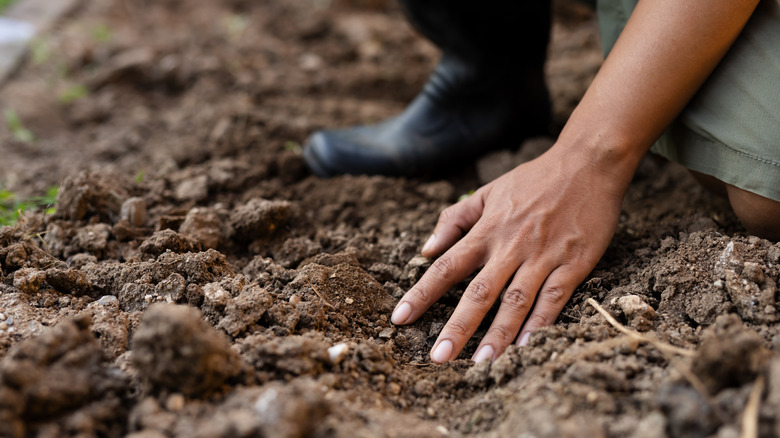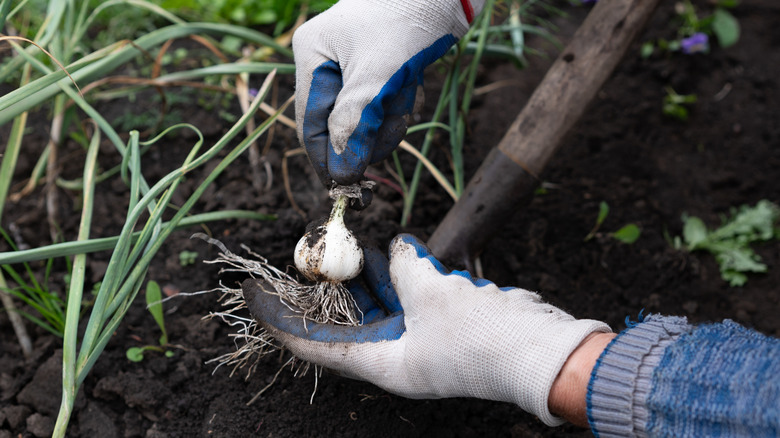The Popular Garden Vegetable You Should Grow For Healthier Soil
If you're looking for a fantastic way to improve soil and help deter pests, look no further than garlic. Garlic isn't just good for repelling vampires. This popular vegetable will help you improve soil, increase drainage, and deter pests from your garden.
Garlic (Allium sativum) is a wonder vegetable, not only because it's a tasty addition to marinara sauces and other dinner recipes, but because it offers health benefits too. For example, it can potentially lower blood pressure and boost our immune systems. Garlic is also an amazing companion plant in the garden because it can help give a boost to the soil. Garlic also repels pests like aphids and cutworms that can wreck havoc in the garden, destroying harvests. You can learn how to control insects with garlic plants fairly easily. Concentrated garlic spray can even kill mosquito larvae.
Garlic also has strong, deep roots that help improve the soil by improving drainage. Garlic roots will help break up dense soil, which will help plants around it, too. Researchers have also discovered that garlic can help improve soil by encouraging good microbes and biochemicals in the soil that can help plants like peppers. Garlic helps control bad bacteria in the soil by producing allicin, which isn't just antibacterial, it's also antifungal and antiviral as well. Parasites like beetles or caterpillars also hate allicin, which gives garlic its pungent flavor and smell. Read on for tips for planting this amazing vegetable to get healthier soil in your garden.
Plant garlic for a happy garden
The first step toward getting the benefits of garlic is to plant it correctly. Garlic grows easily in USDA Plant Hardiness Zones 4 through 9 and needs full sun and well-drained soil. Soil that's too waterlogged will decrease your harvests. It prefers loamy soilwith a pH between 6 and 7,which is about neutral or slightly acidic. Make sure that the soil is well tilled before you plant because garlic doesn't produce seeds but instead grows from cloves of the bulb. Choose the biggest cloves, and they'll grow the biggest garlic bulbs in return.
Most garlic planting instructions will have you add bone meal or fish meal in the hole during planting – a few inches below where you plan to plant the garlic cloves to give garlic a boost of nutrients to grow. Plant the cloves in the ground with the root side down and be sure to allow enough space between them. Typically, you want about 2 to 4 inches between each plant. If you plant them in a row, make sure there's about 10 to 14 inches between each row.
Since sitting in water can cause root rot, water regularly but don't overwater. If it's too late for you, you can buy fungicide for root rot to treat it. As garlic grows, make sure to remove flowers to grow the biggest garlic bulbs. Also don't wait until the leaves brown to harvest garlic. They might be ready to harvest when stems are still green. The best way to know is to pull one up to check to see if the garlic is mature.

